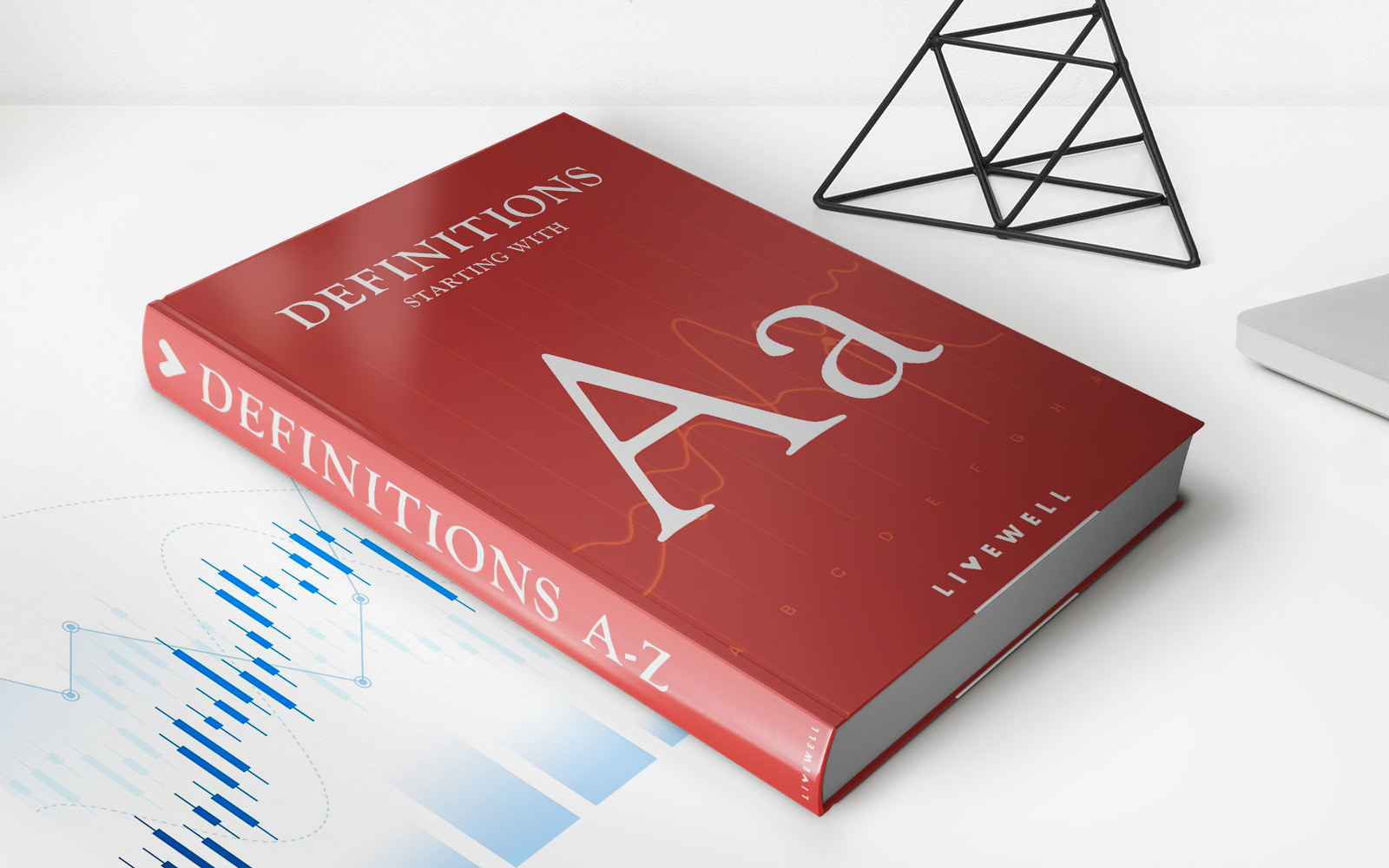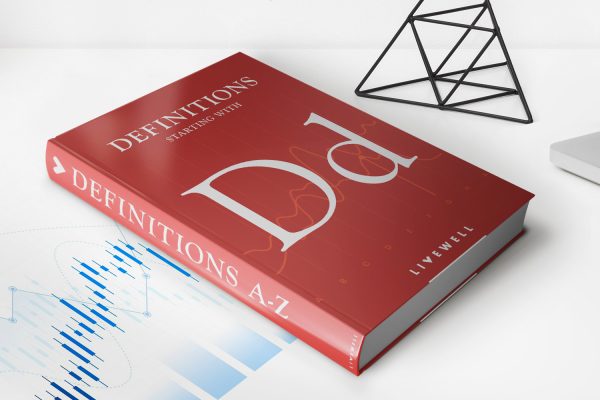

Finance
How Does Index Universal Life Insurance Work?
Published: November 11, 2023
Learn how index universal life insurance works and how it can help secure your financial future. Explore the benefits and features of this unique life insurance option.
(Many of the links in this article redirect to a specific reviewed product. Your purchase of these products through affiliate links helps to generate commission for LiveWell, at no extra cost. Learn more)
Table of Contents
- Overview of Index Universal Life Insurance
- How Does Cash Value Accumulation Work?
- Understanding the Indexing Strategy
- Pros and Cons of Index Universal Life Insurance
- Key Features and Riders of Index Universal Life Insurance
- Policy Loans and Withdrawals
- Factors to Consider Before Purchasing Index Universal Life Insurance
- Comparing Index Universal Life Insurance to Other Types of Life Insurance
- Frequently Asked Questions about Index Universal Life Insurance
Overview of Index Universal Life Insurance
Index Universal Life Insurance (IUL) is a type of permanent life insurance that offers a combination of a death benefit with the potential for cash value growth based on the performance of a specified index, such as the S&P 500. This unique feature sets it apart from traditional universal life insurance policies.
Unlike term life insurance, which provides coverage for a specific period, IUL provides coverage for your entire lifetime as long as you pay the premiums. It offers financial protection for your loved ones in the event of your death, while also allowing you to accumulate cash value over time.
One of the main advantages of IUL is its potential for cash value accumulation. A portion of your premium goes towards the cost of insurance and administrative fees, while the rest is allocated to a cash value account. This cash value has the potential to grow over time based on the performance of the underlying index.
How Does Cash Value Accumulation Work?
Cash value accumulation is one of the key benefits of Index Universal Life Insurance (IUL). It is important to understand how this process works to make the most out of your policy.
When you pay your premiums for IUL, a portion of the money goes towards the cost of insurance, while the remaining funds are allocated to your cash value account. This cash value has the potential to grow over time based on the performance of the underlying index chosen for your policy.
The indexing strategy is typically tied to a specific equity index, such as the S&P 500. The insurance company sets a participation rate that determines how much of the index’s growth will be credited to your cash value account. For example, if the participation rate is 80% and the index grows by 10%, your cash value account would be credited with an 8% growth.
However, it is important to note that IUL policies also come with a downside protection feature called a “floor” or a guaranteed minimum interest rate. This means that even if the underlying index experiences negative growth, your cash value account will not be affected, and it will continue to earn a minimum interest rate specified in the policy.
The cash value that accumulates in your IUL policy can be used in several ways. First, it can be used to pay your policy premiums, allowing you to potentially reduce or eliminate out-of-pocket premium payments. Additionally, you can also take out policy loans against the cash value or make partial withdrawals, providing you with a source of funds in times of financial need.
It’s important to remember that any loans or withdrawals from the cash value will reduce the death benefit of the policy if not repaid. Furthermore, the growth of the cash value may be subject to certain limitations, such as caps or spreads, which are predetermined by the insurance company.
Overall, the cash value accumulation feature of IUL combines the benefits of life insurance coverage with the potential for growth and flexibility, making it an attractive option for individuals seeking a financial safety net while also accumulating funds for the future.
Understanding the Indexing Strategy
The indexing strategy is a critical component of Index Universal Life Insurance (IUL). It determines how the cash value of your policy is linked to the performance of an underlying index. Understanding this strategy is crucial to making informed decisions regarding your IUL policy.
In an IUL policy, the insurance company typically offers a selection of indexing options, such as the S&P 500 or the Nasdaq 100. These indexes represent a broad range of stocks and serve as benchmarks for the overall performance of the market.
When you choose an indexing strategy, the insurance company determines the participation rate, which signifies the percentage of the index’s growth that will be credited to your cash value account. For example, if the participation rate is 80%, and the index grows by 10%, your cash value would receive an 8% growth. It’s important to note that the participation rate is set by the insurance company and may vary among different IUL policies.
In addition to the participation rate, IUL policies may also have other factors that affect the cash value growth. These factors can include caps, spreads, and administrative fees. A cap is a limit on the maximum amount of growth that will be credited to your cash value, regardless of how well the underlying index performs. A spread is a percentage subtracted from the index’s growth before crediting it to your cash value. Administrative fees are charges deducted from the cash value to cover policy expenses.
IUL policies also typically offer a floor or a guaranteed minimum interest rate. This ensures that even if the underlying index experiences negative growth, your cash value will not decrease. Instead, it will earn a minimum interest rate set by the insurance company.
Understanding the indexing strategy is crucial for IUL policyholders because it helps them gauge the potential cash value growth and the level of risk involved. It’s important to carefully review the details of the indexing options, participation rates, caps, spreads, and other policy factors before making a decision.
Ultimately, the indexing strategy of an IUL policy should align with your financial goals, risk tolerance, and long-term plans. Consulting with a financial professional or an insurance advisor can help you navigate the complexities of the indexing strategy and choose the best option for your specific needs.
Pros and Cons of Index Universal Life Insurance
Index Universal Life Insurance (IUL) offers a unique set of advantages and disadvantages. Understanding the pros and cons can help you determine if IUL is the right life insurance option for your needs and financial goals.
Pros:
- Cash Value Growth: One of the main advantages of IUL is the potential for cash value growth based on the performance of an underlying index. This allows policyholders to accumulate funds over time, providing a source of savings and potentially reducing out-of-pocket premium payments.
- Death Benefit Protection: Like other forms of permanent life insurance, IUL provides a death benefit to your beneficiaries upon your passing. This can offer financial security and help replace lost income, pay off debts, or cover final expenses.
- Tax Advantages: The cash value growth in an IUL policy is generally tax-deferred, meaning you won’t owe taxes on the earnings as long as the funds stay within the policy. Additionally, death benefit proceeds are often tax-free for your beneficiaries.
- Flexibility: IUL policies often offer flexibility in premium payments, allowing policyholders to adjust their premiums or even skip payments if there is sufficient cash value. This flexibility can be helpful during periods of financial uncertainty or instability.
- Downside Protection: Most IUL policies incorporate a guaranteed minimum interest rate or a “floor.” This ensures that even if the underlying index performs poorly, your cash value will not decrease.
Cons:
- Complexity: IUL policies can be complex and may require a thorough understanding of the indexing strategy, participation rates, caps, spreads, and other policy factors. It’s important to carefully review the terms and conditions and consult with a financial professional to make informed decisions.
- Cost: Compared to term life insurance, IUL premiums are generally higher. This is because a portion of the premium goes towards the cash value accumulation and other policy fees. It’s important to ensure that the cost aligns with your budget and financial situation.
- Market Risk: The cash value growth in IUL policies is tied to the performance of an underlying index. While this offers the potential for higher returns, it also exposes the cash value to market fluctuations. It’s essential to consider your risk tolerance and investment goals before opting for IUL.
- Policy Adjustments: Making changes to an IUL policy, such as increasing or decreasing the death benefit or adjusting the premium payments, may involve additional fees or require underwriting approval. This can limit the flexibility of the policyholder in certain circumstances.
Ultimately, the decision to purchase an Index Universal Life Insurance policy depends on your individual needs and financial situation. It’s important to weigh the pros and cons, assess your long-term goals and risk tolerance, and consult with a knowledgeable insurance professional to make an informed choice.
Key Features and Riders of Index Universal Life Insurance
Index Universal Life Insurance (IUL) comes with various key features and riders that can enhance the flexibility and customization of your policy. Understanding these features and riders is essential for tailoring your IUL policy to meet your specific needs. Let’s explore some of the most common ones:
Key Features:
- Cash Value Accumulation: IUL policies allow for cash value accumulation over time. A portion of your premium payments goes into a cash value account, which grows based on the performance of an underlying index. This provides the potential for tax-deferred growth and the opportunity to access funds in the future.
- Death Benefit: Like other types of permanent life insurance, IUL offers a death benefit that provides financial protection to your beneficiaries in the event of your passing. The death benefit can help cover final expenses, replace lost income, pay off debts, or fund other financial needs.
- Policy Loans: Many IUL policies allow you to take out loans against the cash value of your policy. This feature can provide you with access to funds for various purposes, such as purchasing a home, funding education, or covering unexpected expenses. It’s important to note that policy loans accrue interest and may impact the death benefit if not repaid.
- Flexible Premiums: IUL policies often offer flexibility in premium payments. This means that you may have the option to adjust your premium amounts or timing, depending on your financial situation. You may also have the ability to use the cash value to pay premiums, potentially reducing or eliminating out-of-pocket premium payments.
- Market Indexing: The indexing feature of IUL allows your cash value to be linked to the performance of a specified index, such as the S&P 500. This means that your cash value has the potential to grow based on the positive performance of the underlying index.
- Tax Advantages: IUL policies often provide tax advantages. The growth of the cash value is typically tax-deferred, meaning you do not owe taxes on the earnings as long as the funds remain within the policy. Additionally, the death benefit is often received income tax-free by your beneficiaries.
Riders:
Riders are optional add-ons that enhance the coverage or customize your IUL policy. Some common riders available for IUL include:
- Accelerated Death Benefit Rider: This rider allows you to access a portion of the death benefit if you are diagnosed with a terminal illness or have a qualifying medical condition. It provides financial assistance during challenging times and can be used to cover medical expenses or improve the quality of life.
- Long-Term Care Rider: This rider provides additional funds to cover long-term care expenses, such as nursing home care, assisted living, or in-home care. It offers financial protection and ensures that you have resources available to maintain your quality of life in the event of a chronic illness or disability.
- Child Term Rider: This rider provides coverage for your children, typically on a term basis. It offers financial protection for unforeseen circumstances and can help cover funeral expenses or other costs associated with the loss of a child.
- Guaranteed Insurability Rider: This rider allows you to purchase additional life insurance coverage without the need for a medical exam or underwriting in the future. It is particularly beneficial if you anticipate a need for more coverage as your financial situation or family dynamics change.
- Waiver of Premium Rider: This rider waives premium payments if you become disabled or unable to work due to injury or illness. It ensures that your policy remains in force, providing uninterrupted coverage, even if you are unable to pay premiums.
It’s important to carefully evaluate these features and riders in consultation with an insurance professional to determine which ones align with your specific needs and goals. Each rider may come with additional costs, so it’s essential to weigh the benefits against the associated expenses.
Policy Loans and Withdrawals
One of the appealing features of Index Universal Life Insurance (IUL) is the ability to access funds through policy loans and withdrawals. Understanding how these options work can help you make informed decisions about utilizing the cash value of your policy.
Policy Loans:
Most IUL policies allow policyholders to take out loans against the cash value of the policy. With a policy loan, you can borrow funds from the cash value, using the policy itself as collateral. These loans typically have a fixed or variable interest rate, which is determined by the insurance company.
When taking out a policy loan, it’s important to consider the following:
- Amount: The maximum amount you can borrow will depend on the available cash value in your policy and the terms set by the insurance company. Generally, you can borrow up to a certain percentage of the cash value. However, it’s essential to borrow responsibly to maintain the death benefit and avoid policy lapses.
- Repayment: Policy loans accrue interest, which can vary depending on the policy terms. The loan balance and interest can be repaid in several ways, such as making regular premium payments, paying a lump sum, or allowing the loan balance and interest to be deducted from the death benefit upon your passing.
- Impact on Death Benefit: If you don’t repay the loan, the outstanding balance (including accrued interest) will be deducted from the death benefit upon your passing. It’s crucial to carefully consider the impact on your beneficiaries and the overall objective of your policy when taking out policy loans.
Withdrawals:
In addition to policy loans, IUL policies often allow policyholders to make partial withdrawals from the cash value. These withdrawals are typically tax-free up to the amount of premiums paid. However, any amount withdrawn beyond the premiums paid may be subject to income tax.
Here are a few things to keep in mind regarding withdrawals:
- Withdrawal Limits: IUL policies may have specific rules about the frequency and amount of withdrawals you can make. Some policies have a minimum withdrawal amount, while others have limits on the percentage of the cash value that can be withdrawn in a given year.
- Impact on Cash Value and Death Benefit: Withdrawing funds from the cash value will reduce its balance and may also reduce the potential for future growth. Furthermore, withdrawals may lower the death benefit if not repaid, potentially impacting the coverage provided to your beneficiaries.
- Tax Considerations: While partial withdrawals up to the amount of premiums paid are generally tax-free, any amount withdrawn beyond that may be subject to income tax. It’s important to consult with a tax advisor to understand the tax implications of withdrawals from your specific policy.
Ultimately, the decision to take out a policy loan or make a withdrawal from an IUL policy should be based on your financial needs, goals, and a thorough understanding of the impact on the policy’s cash value and death benefit. Consulting with an insurance professional can help you navigate these options and make informed choices.
Factors to Consider Before Purchasing Index Universal Life Insurance
Before purchasing an Index Universal Life Insurance (IUL) policy, it’s essential to thoroughly evaluate various factors to ensure it aligns with your financial goals and needs. Consider the following aspects to make an informed decision:
Financial Situation and Goals:
Assess your current financial situation, including your income, assets, and liabilities. Determine your short-term and long-term financial goals, such as saving for retirement, funding your children’s education, or leaving a legacy for your loved ones. Understanding your financial standing and objectives will help you determine if an IUL policy is the right fit for you.
Risk Tolerance:
IUL policies offer the potential for cash value growth based on the performance of an underlying index. However, this comes with market risk. Consider your risk tolerance and your comfort level with market fluctuations. If you prefer a more conservative approach, you may be better suited to a policy with a guaranteed interest rate rather than a variable component tied to an index.
Insurance Needs:
Evaluate your insurance needs to ensure that the death benefit provided by an IUL policy adequately covers your obligations and responsibilities. Consider factors such as your outstanding debts, mortgage, dependent care, and any other financial obligations you want to address with the policy proceeds. Additionally, take into account your current life stage and the potential changes in your coverage needs over time.
Premium Affordability:
Assess your budget and determine how much you can comfortably allocate towards premiums. IUL policies generally have higher premiums compared to term life insurance due to the added cash value accumulation and other policy features. Ensure that the premium payments are sustainable in the long run, as lapsing the policy can result in a loss of coverage and potential financial implications.
Policy Illustrations and Projections:
Request policy illustrations from insurance providers to review how the IUL policy may perform based on different scenarios and assumed interest rates. Examine the projected cash value growth, death benefit, and premium requirements over time. Analyze these projections critically and ask questions to understand the assumptions and the potential risks involved.
Insurance Company Reputation:
Research and evaluate the reputation and financial strength of the insurance company offering the IUL policy. Look for ratings from independent rating agencies such as A.M. Best, Standard & Poor’s, or Moody’s to assess the company’s ability to fulfill its financial obligations in the long term.
Professional Guidance:
Consult with a licensed insurance professional or financial advisor who specializes in life insurance. They can provide expert guidance, analyze your specific needs, and help you navigate the complexities of IUL policies. They can also answer your questions, address concerns, and provide objective insights that will assist you in making an informed decision.
By considering these factors and conducting thorough due diligence, you can make a well-informed decision about whether an Index Universal Life Insurance policy is the right choice for you, aligning with your financial goals and risk tolerance.
Comparing Index Universal Life Insurance to Other Types of Life Insurance
When considering life insurance options, it’s important to understand the differences between Index Universal Life Insurance (IUL) and other types of life insurance. Each type has its own features and benefits that cater to different financial needs and goals. Here’s a comparison of IUL with other common types of life insurance:
Term Life Insurance:
Term life insurance provides coverage for a specific period, typically 10, 20, or 30 years. It offers a death benefit but does not accumulate cash value. Term insurance is generally more affordable compared to IUL, making it a popular choice for individuals who need coverage for a specific period, such as paying off a mortgage or ensuring financial security for dependents. However, it lacks the cash value element and long-term savings potential of IUL.
Whole Life Insurance:
Whole life insurance is a type of permanent life insurance that offers coverage for your entire life. It provides a death benefit and builds cash value over time. Unlike IUL, the cash value growth in whole life insurance is usually guaranteed and not linked to the performance of an index. Whole life insurance may offer more stability and certainty in terms of cash value growth, but it tends to have higher premiums compared to IUL.
Variable Universal Life Insurance:
Variable Universal Life Insurance (VUL) is another type of permanent life insurance that allows policyholders to invest the cash value in a variety of investment options, such as mutual funds. Unlike IUL, which is tied to the performance of an index, VUL allows for more flexibility in investment choices. However, VUL also comes with market risk, as the cash value is exposed to the fluctuations of the investment options selected. VUL typically requires active management and monitoring of investment performance.
Universal Life Insurance:
Universal life insurance is another type of permanent life insurance that offers a death benefit and a cash value component. Similar to IUL, it provides flexibility in premium payments and the potential for cash value growth. However, the cash value growth in universal life insurance is often tied to a fixed interest rate set by the insurance company, whereas IUL is linked to the performance of an index. IUL offers the potential for higher returns but also carries market risk.
Comparing these types of life insurance policies allows you to evaluate their features and benefits in relation to your individual needs and financial goals. Consider factors such as the potential for cash value growth, premium affordability, risk tolerance, and desired coverage duration when making your decision. It’s advisable to consult with a licensed insurance professional or financial advisor who can provide personalized guidance and help you determine the most suitable life insurance option for your specific circumstances.
Frequently Asked Questions about Index Universal Life Insurance
Here are some commonly asked questions about Index Universal Life Insurance (IUL) to help you gain a better understanding of this type of life insurance:
1. What is Index Universal Life Insurance?
IUL is a type of permanent life insurance that offers a combination of a death benefit and potential cash value growth based on the performance of an underlying index, such as the S&P 500.
2. How does the cash value growth in IUL work?
A portion of your premium payments goes towards the cost of insurance, while the remaining funds are allocated to a cash value account. This cash value has the potential to grow over time based on the performance of the chosen index, subject to factors such as participation rates, caps, spreads, and administrative fees.
3. What is the difference between IUL and other types of life insurance?
IUL differs from other types of life insurance, such as term life insurance, whole life insurance, and variable universal life insurance, in terms of how the cash value accumulates and the potential for growth. While term life insurance offers coverage for a specific period and has no cash value, whole life insurance provides guaranteed cash value growth, and variable universal life insurance allows for investment choices within the policy.
4. Are premium payments flexible in IUL?
Yes, IUL policies typically offer flexibility in premium payments. You may have the option to adjust your premium amounts or timing, depending on your financial situation and the cash value available in the policy.
5. Is the cash value growth in IUL guaranteed?
The cash value growth in IUL is not guaranteed. It is influenced by the performance of the underlying index and various factors, such as participation rates and policy fees. However, most IUL policies include a guaranteed minimum interest rate or a “floor” to protect the cash value from negative market fluctuations.
6. Can I access the cash value in my IUL policy?
Yes, you can access the cash value in your IUL policy through policy loans or partial withdrawals. However, it’s important to note that loans and withdrawals can reduce the death benefit if not repaid, and they may have tax implications.
7. What happens to the cash value if I surrender my IUL policy?
If you surrender your IUL policy, you will receive the accumulated cash value, minus any outstanding loans and applicable surrender charges. However, surrendering the policy terminates the coverage, and you will no longer have a death benefit.
8. How is the death benefit determined in IUL?
The death benefit in IUL is typically determined by the face amount of the policy, which is the initial death benefit specified at the time of purchase. It may also include any accumulated cash value, depending on the policy’s terms and conditions.
9. Can I convert my term life insurance policy to an IUL policy?
Some insurance companies may offer the option to convert a term life insurance policy to an IUL policy. Conversion privileges, terms, and conditions vary depending on the insurance provider and the specific policy. It’s important to review the conversion options beforehand.
10. Is IUL suitable for everyone?
IUL may be suitable for individuals who want permanent life insurance coverage with the potential for cash value growth linked to the performance of an index. However, it’s important to carefully consider your financial goals, risk tolerance, and insurance needs before choosing IUL. Consulting with a licensed insurance professional can help you determine if IUL is appropriate for your specific circumstances.
Remember, these answers are general in nature, and it’s advisable to seek personalized guidance from an insurance professional to obtain detailed information specific to your situation.














